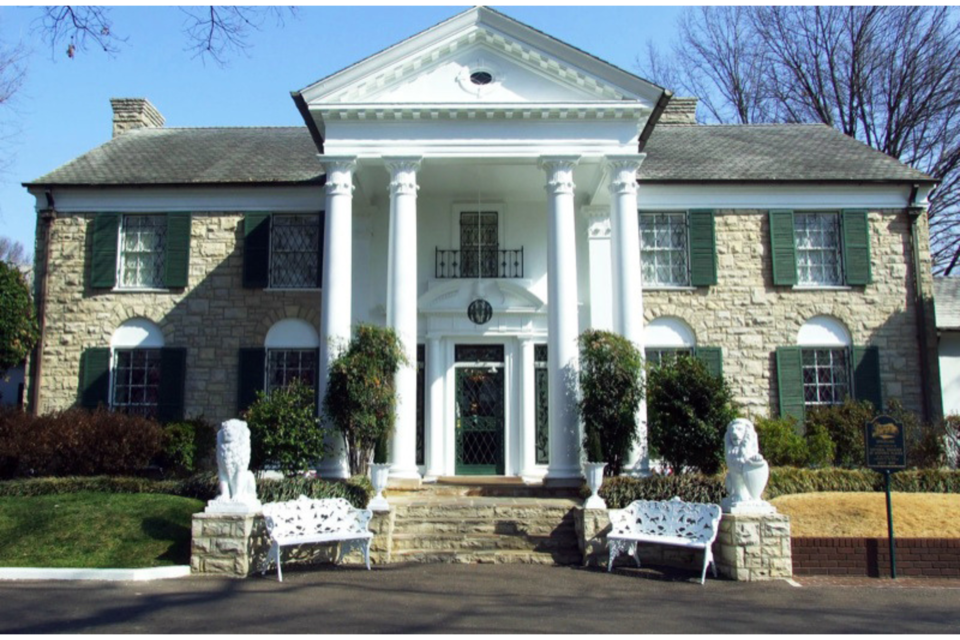Georgia Southern's Dr. Chris Caplinger shares his special connection to Elvis's Graceland and memories of Elvis Week. Every year, fans of rock-and-roll icon Elvis Presley flock to Memphis, Tennessee, by the thousands for “Elvis Week,” which marks the anniversary of his death on August 16, 1977.
Graceland, Elvis’s home and final resting place, has hosted the annual gathering since it was opened to the public in 1982. Attendees enjoy a variety of events throughout the week and are invited to attend a candlelight vigil on the night of August 15 to pay tribute to The King.
Although Elvis Week is the most popular time to visit Graceland, the 13.8-acre estate hosts hundreds of thousands of visitors throughout the year. The colonial-revival-style mansion at Graceland was built in 1939 and was purchased by Elvis in 1957. The property would grow through the years to include a 2400-square-foot racquetball building (now known as the trophy building as it holds Elvis’s many gold records), kidney-shaped swimming pool, horse stables, shooting range and a pink limestone wall encircling the property.
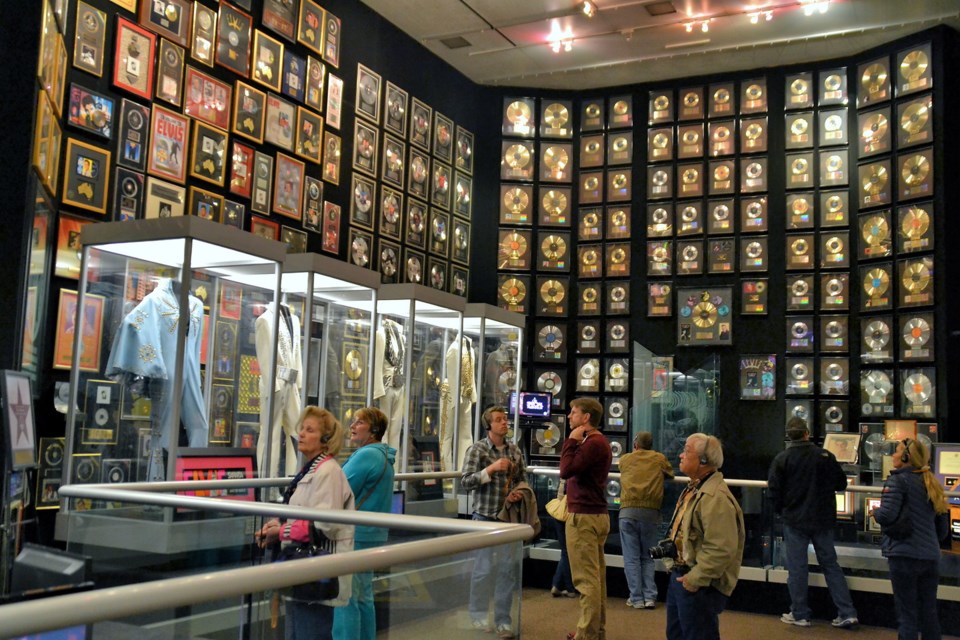
Guests are allowed to tour the estate itself, Elvis’s two aircraft Lisa Marie and Hound Dog II, as well as a car garage which houses Presley’s infamous pink Cadillac. Before the introduction of self-guided audio tours, live tour guides narrated the events of Elvis’s life and introduced the relics that adorned the home and surrounding grounds.
Dr. Chris Caplinger's Elvis connection
Dr. Chris Caplinger with the Georgia Southern Department of History was one such tour guide from 1987 to 1992. A lifelong resident of Memphis, he began working at Graceland at the age of 16. “I started in 1987, so Elvis had died 10 years previously. Graceland had opened a few years earlier as a way to save the estate. It was losing money so opening Graceland was a way to keep the estate solvent,” explains Dr. Caplinger.
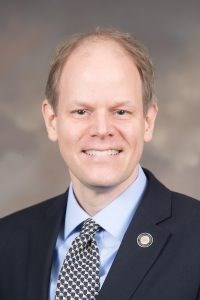
The upkeep on the mansion was reportedly over $500,000 per year, and the executor to the estate was at risk of falling into bankruptcy before hiring Jack Soden, an outside consultant, who made the decision to open Graceland to the public for tourism in 1982. This would prove to be the saving grace for the estate, which is now worth over $100 million.
Graceland would soon become a bustling tourist destination with thousands of guests visiting the grounds weekly. Dr. Caplinger and the other guides were responsible for interpreting as well as managing the flow of people.
“It was a big house, but there were eight bedrooms so the rooms were kind of small. You couldn’t accommodate massive numbers of people, so tours were capped at 22," Dr. Caplinger recalls.
“As a guide you would work at a certain space, and this was the case through the house and also into the trophy building, which is more a tour of his life. So you would work in a certain space like the dining room, and every two and a half minutes there would be a different group coming through. You would have a minute and thirty-five seconds to say your piece and you would need that extra time for people to shuffle off and the next group would come in.”
Elvis Week
The most popular week of the year would see more enthusiastic visitors than the typical sight-seeing tourists. “As we approached Elvis Week, "Death Week" as we unofficially called it, the proportion of people who came through who were real fans increased. I mean people taking pictures without even looking. You had to up your game a bit on those weeks because the super fans would call you out if you got something wrong. As a young guy, you learned a lot that way,” says Dr. Caplinger.
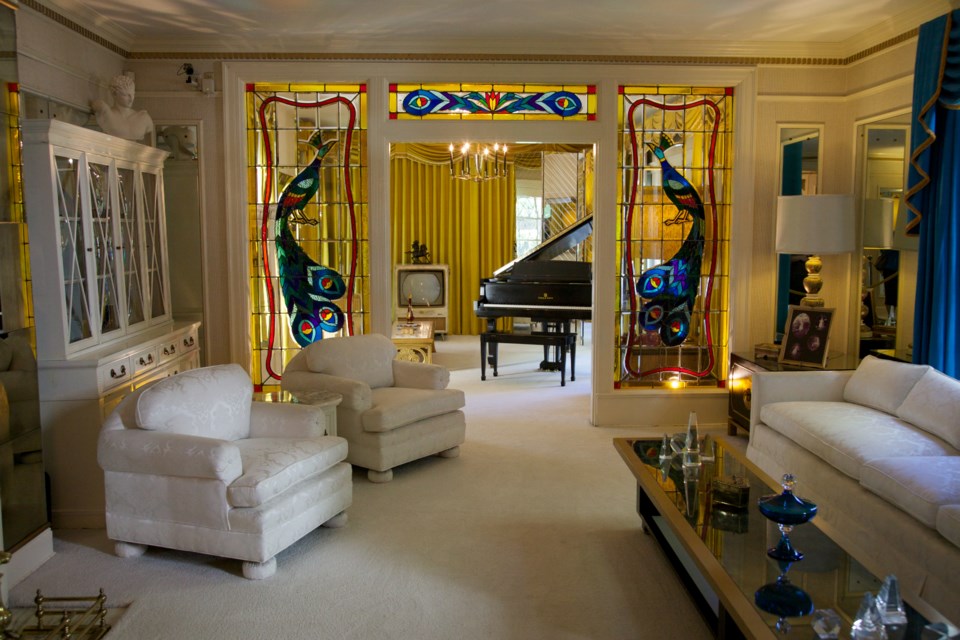
Master the History
Being a tour guide at the estate was no walk in the park. Guides would need to know the history of each area and be able to manage large crowds while keeping them entertained.
“There were days that I was assigned to work the driveway. It was in the 80s, we were wearing this horrible blue polyester, and it was just hot. I would just work the crowd, that’s all I did. I didn’t do a tour, but as people were lined up on the driveway getting ready to go, I was just there trying to make people laugh so they weren’t just miserable,” Dr. Caplinger recalls.
Rewarding Experience
Despite the challenges, he remembers the experience as a rewarding one.
“The height of the experience was really the interactions with the guests. Both people who are doing the kitschy-tourist thing and the fans. For different reasons they are just very interesting,” says Dr. Caplinger. Telling the story of such an influential character where pivotal moments took place is an opportunity to captivate an audience.
“In the racquetball building, which is where you would talk about when Elvis died, you would dramatize the story. Elvis was about to leave for a tour. He was going to start in Seattle and come down the east coast to end up in Memphis for two final shows. The tour was sold out, just like they all were," Dr. Caplinger recounted, clearly as familiar with the material as if he was still a guide today.
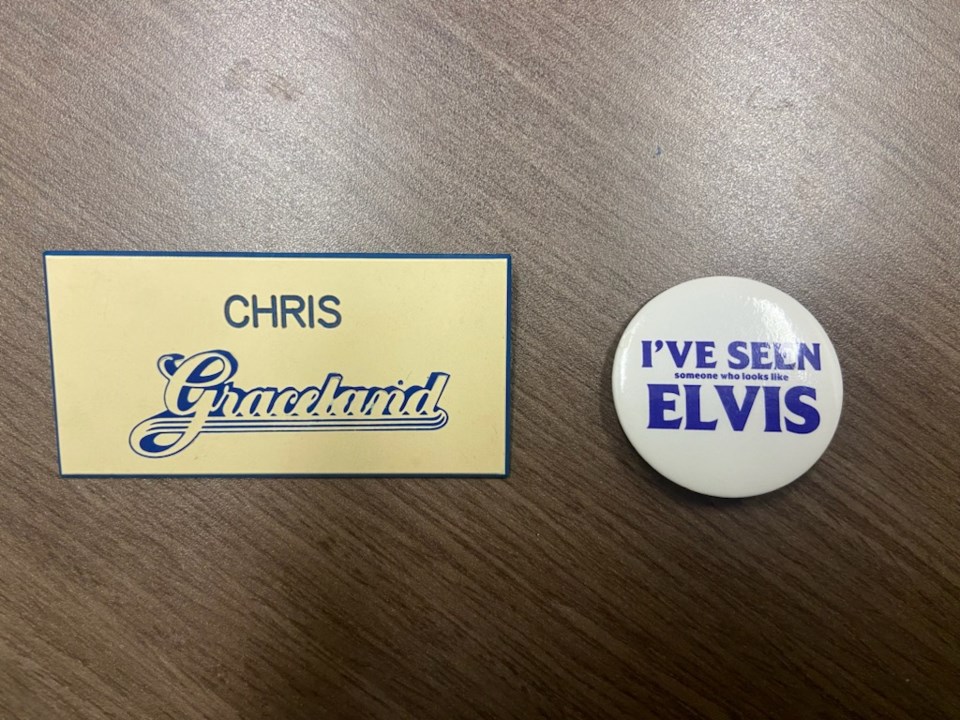
“He sat down at that piano and played Blue Eyes Crying in the Rain and Unchained Melody. He went up to the mansion to rest up for that upcoming concert tour, but Elvis passed away that day. He was 42. If it were August 14th, and you did it well, you could elicit tears. It was a great job, it was fun. I enjoyed the opportunity to do something that was a little different and distinctive."
I asked Chris if he gained a greater appreciation for Elvis’s life through his experience of telling his story. “Certainly for what he did,” Dr. Caplinger replied, “His music, his ability and staying power. The stranglehold he had on the charts in the early rock days was really impressive. You can see it in the Hall of Gold (in the trophy room) and in his imprint on sales. He sold a lot of records, but he didn’t have a lot of critical acclaim. He had this massive imprint in the 50s before he goes into the army, and then he had his sort of years in the desert when he’s doing the movie thing, and then the tours. Even as his life is spiraling out of control, he begins to get back into his core, the things that he would be known for as a performer.”
To learn more about Graceland and the life of the legendary artist who called it home, or to start planning your trip to the historic site, visit www.graceland.com.

